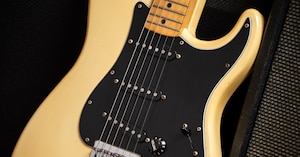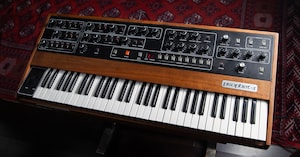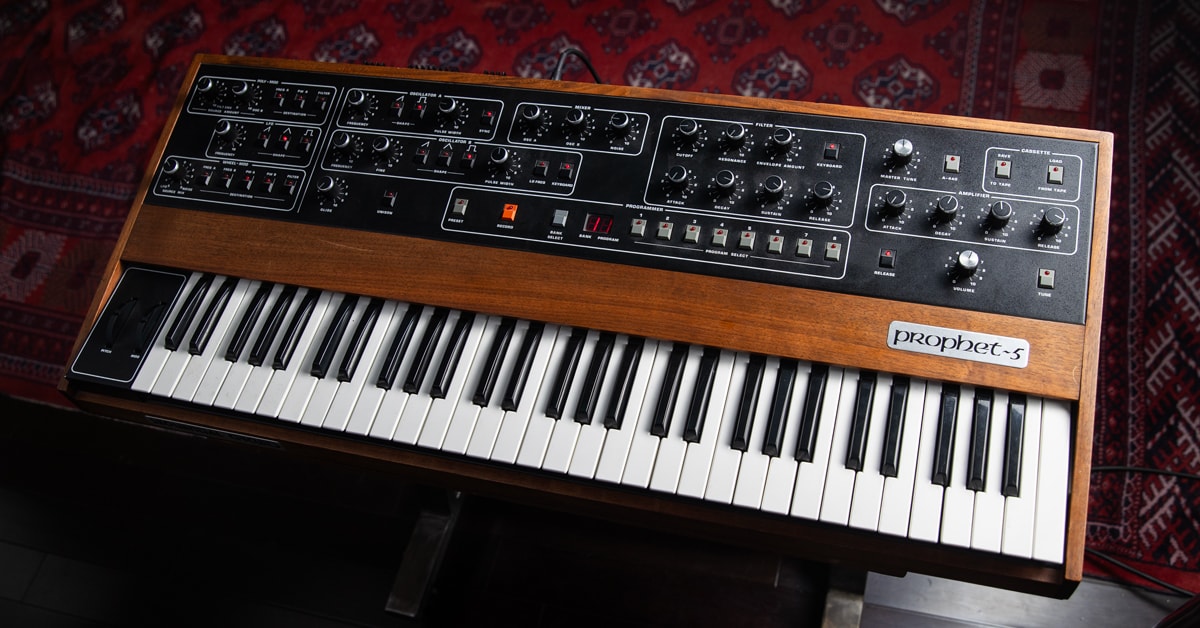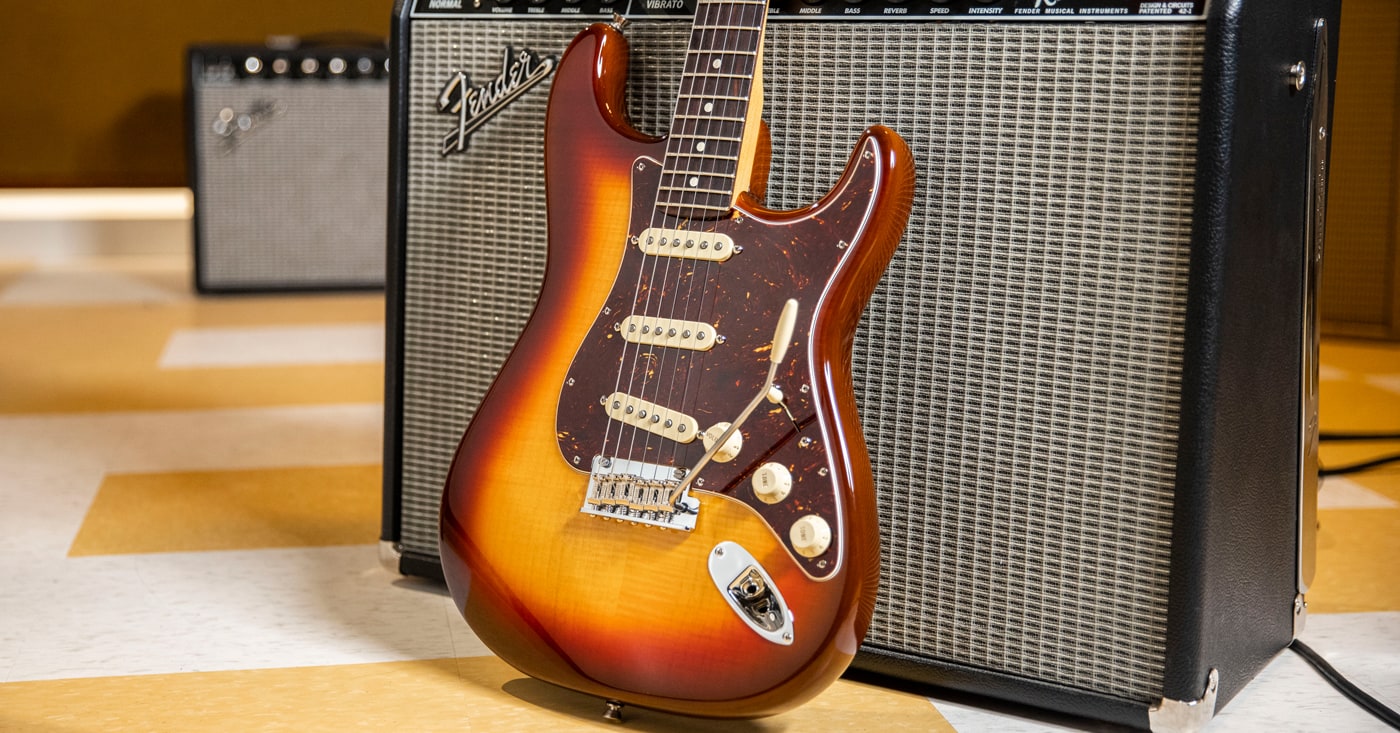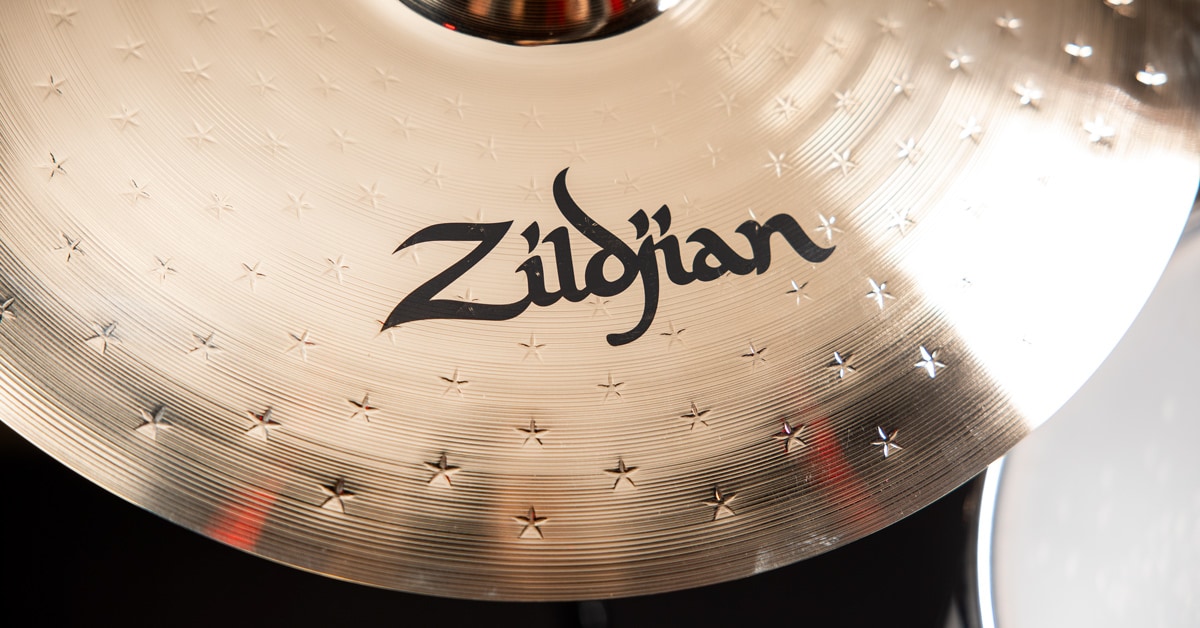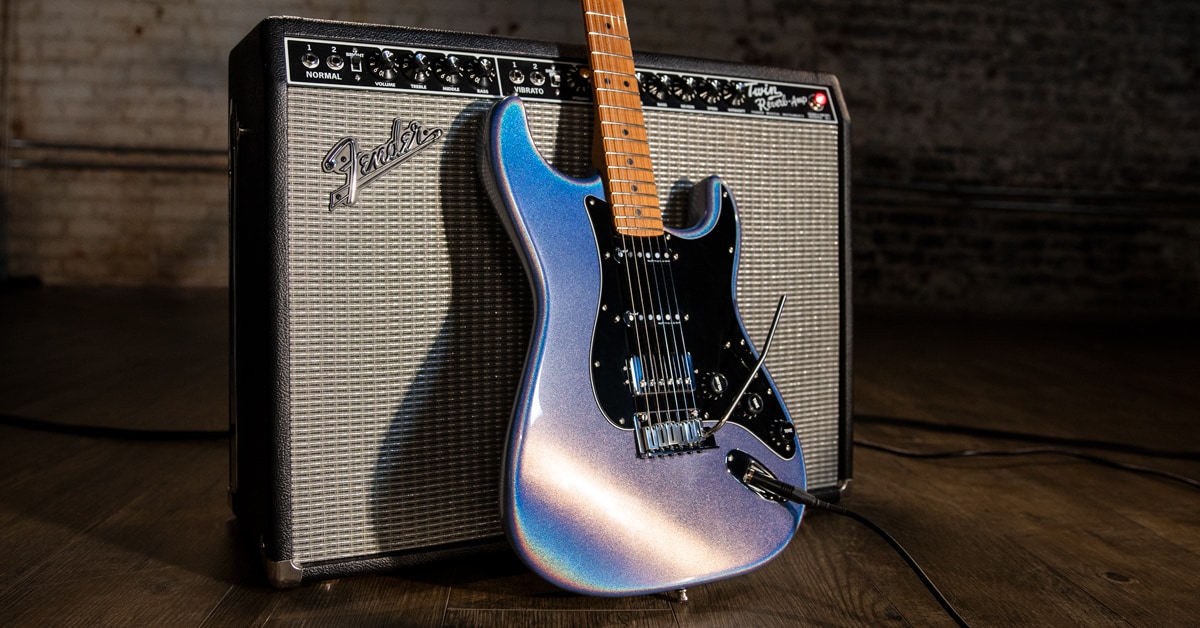After appearing on near-infinite platinum-selling mega tracks, the Fender Stratocaster is observing its own platinum anniversary in 2024—70 years of continuous production, innovation and inspiration.
And it’s having a big party to mark the milestone.
First off, marvel at the new finishes, vintage recreations, and meticulous sonic and playability updates of the models included in the Fender 70th Anniversary Stratocaster collection. Then, let’s all keep the revelry rocking at a fever pitch with exclusive content and other surprises from Guitar Center as the “platinum year” unfolds.
To bring you up to date on the 70th Anniversary models, we reached out to the Fender Product Management Team (FPMT) to detail some of the features, backgrounds and other goodies devised to honor seven decades of Stratocaster eminence.
Learn more about the indominable Strat spirit, by checking out How to Buy The Best Stratocaster, as well as The History of the Fender Stratocaster.
What do you think are the key qualities of the Stratocaster that have ensured its continued success for 70 years?
FPMT: The Stratocaster possesses many qualities that have made it a beloved and enduring instrument over the past seven decades. It is incredibly versatile. The Strat can be used for any genre of music from blues to funk, or country to punk.
It’s also transparent. It translates the technique and expressiveness of any artist while still retaining its core tone. When you hear a track by Jimi Hendrix, David Gilmour or Stevie Ray Vaughan, you instantly recognize who it is, and you also instantly recognize that they are playing a Strat.
This segues into another reason for the Stratocaster’s longevity—the body of musical work that has been created with it. For decades, the most creative and talented artists have been recording hit after hit using a Stratocaster—literally creating the soundtrack to our lives. The Stratocaster was there at the very beginning of the birth of rock and roll, and pop music, and its use on so many hit recordings established the sound of the Strat as the sound of popular music.
A direct benefit of Leo Fender’s brilliant concept to create instruments that were easily manufactured and repaired is that the Strat is highly customizable. This is another important reason the Stratocaster has remained so popular. Players love to modify their Strats. Changing pickups, pickguards, plastic parts and even the neck is all possible, allowing the player to transform their Strat to match their own evolving tastes and desires.
The tone of the Stratocaster is legendary. It’s crystalline and bell-like, warm and expressive. Able to weave its way through any musical setting, the sound of the Stratocaster is both mesmerizing and inspiring, and unlike any other electric instrument.
Finally, let’s not forget to mention the way the guitar looks. With its sultry curves and comfortable contours, the double-cutaway body and elegant headstock were revolutionary for the time and have become synonymous with the shape of an electric guitar.
Stratocasters were made to be hot-rodded and modded. In your opinion, what was the strangest or most intense modification made to a production model? Also, how far out could a designer go before a Strat may not be considered to be Strat-like anymore?
I would have to say the most intense modification to a Strat that made it to production was the Parallel Universe Jaguar Strat, which we released in 2018. We basically installed all the pickups, control plates and tremolo of a Jaguar into a Strat body. It was quite a task. I think you can modify a Strat quite heavily and still consider it to be Strat-like. Different woods for the body, neck and fingerboard; all flavors of pickups and even different pickguard shapes have all been tried at some point. For our core Strat models, I believe the most important ingredients are the classic double-cut silhouette, Fender single-coil pickups, a 25.5" scale length and of course, the distinctive Stratocaster headstock. Those wonderful design elements are what made the Stratocaster the icon that it is today.
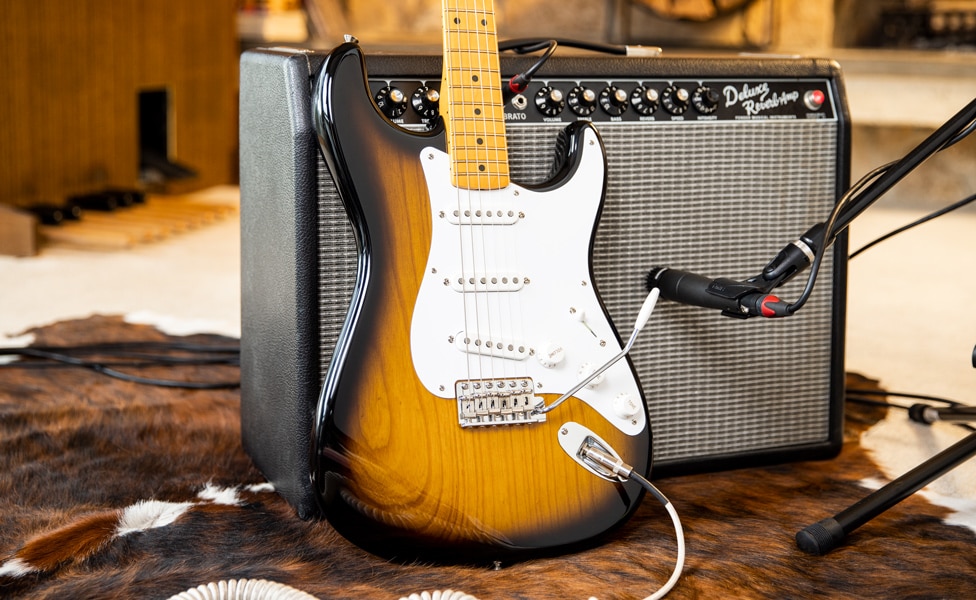
Each of the five 70th Anniversary models have their own unique finishes. Can you speak to each finish and how they came to be?
Two of the finishes are classic Fender colors from the past. The 70th Anniversary American Vintage II 1954 Strat has a beautiful two-piece ash body painted with a traditional two-color sunburst finish. That was the color used on the very first Strat, and we wanted to capture that legendary aesthetic as part of the Anniversary collection.
The 70th Anniversary Vintera II Antigua Stratocaster is also a color from Fender’s past that is “not so traditional.” We’ll talk about the genesis of that color in a moment.
The 70th Anniversary America Ultra Strat HSS finish was the result of our paint department experimenting with paint that had both “flop” and metallic flake. It is challenging to combine both of those paint elements in a finish that is both durable and production friendly. Our experts went through countless rounds of testing before they hit the right recipe, and they offered up more than one color option. The Amethyst that you see on the Anniversary model was the one that jumped out at us. It has this amazing prism-like quality that flops with various shades of lavender and purple. In the sunlight, it’s just dazzling.
For the 70th Anniversary American Professional II Stratocaster, we decided to use a flame maple top for a touch of class. We wanted to highlight the beautiful woodgrain and give a nod to tradition with a new transparent burst. The goal was to create a finish that bursts from a reddish burgundy to a nice amber center. After several rounds of spraying, we ended up with Comet Burst.
Finally, the Nebula Noir finish found on the 70th Anniversary Player Stratocaster is another experimental color that we had been playing with for years. We loved how the finish can transform from black into a galaxy of red, blue and purple stars when the light hits it just right. Sparkle finishes can be very difficult in production, because they can easily permeate paint booths and contaminate other paint. Our paint gurus came through once again and developed a production-friendly sparkle. Initially, the sparkle in this color was more sparse—more of a hint of sparkle. We wanted the Anniversary model to really “wow,” so we tested various levels of saturation. When we saw the current version, we instantly knew it was the right color.
Circling back to the non-traditional Antigua finish on the Vintera II Strat, could you tell us how it came to be and what makes it special?
In the late ’60s, Fender released the Coronado model as its hollowbody guitar offering. The Coronado II was the dual-pickup version of the instrument. The double-bound body of this guitar posed some challenges in production at the time, and Fender found the bodies would often exhibit small scorch marks during the binding process. In true Leo Fender fashion, rather than scrap the bodies, Fender developed a finish that would hide the scorch marks, and the legendary Antigua finish was born.
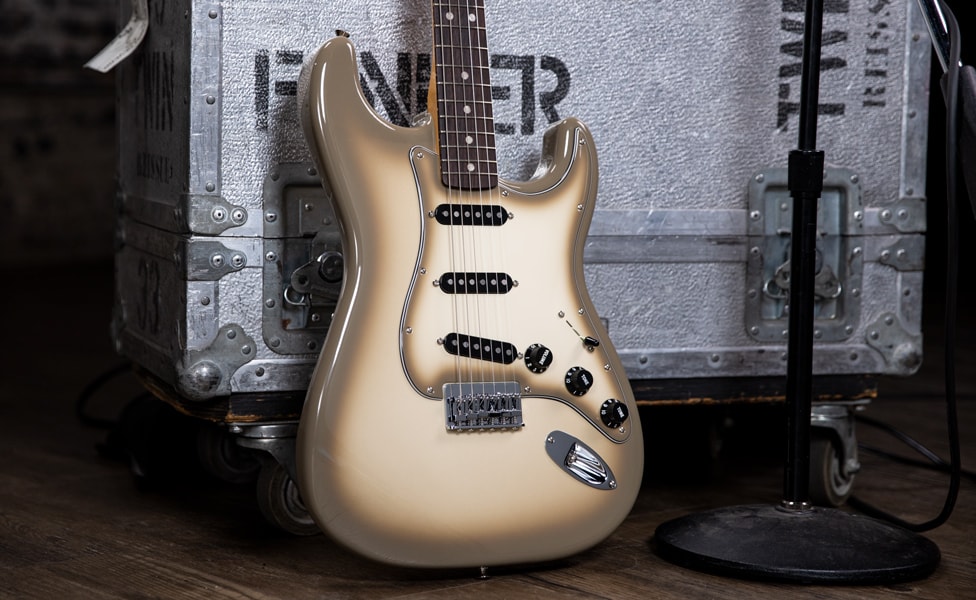
The earliest examples of the Antigua finish look quite different than later versions. They have a much darker edge burst, and the center is more greenish yellow. In the late ’70s, Fender resurrected the Antigua finish and applied it on many different models, from the Strat to the Tele to the P Bass. This later version was much more grayish green with a lighter edge burst.
Another hip touch from Fender was painting the pickguard to match the body. The Antigua finish was not used on a huge number of units, so it is a bit rare. Needless to say, the unusual hue of the paint, and the fact that Fender matched the pickguards, make these Antigua instruments truly unique, and certainly one of the most polarizing finishes ever offered.
Can you tell us a bit more about the 70th Anniversary Player model? It seems to be a nice blend of everything we like about Player, but with some better-than-standard features.
The Player is one of our most popular Stratocasters. It was a no-brainer to include a special version in the Anniversary collection. The 70th Anniversary Player Strat has all the great features that make it special—a nice alder body, a two-point tremolo for smooth action and solid tuning stability, a modern 9.5" radius fingerboard and a fan-favorite modern C neck profile.
To really make it special, we gave the Anniversary Player some additional tasty upgrades. First, we added a couple of classic Fender touches such as a bone nut and a rosewood fingerboard with rolled edges—which significantly enhance the tone and feel of the neck. Next, we swapped out the pickups with some Pure Vintage ’59 single-coils—which is one of our favorite Strat sets. These pickups are warm, touch sensitive and “Stratty” in all positions. And, of course, we painted the guitar in the aforementioned Nebula Noir finish. The white pearl pickguard and black plastic parts add a nice touch to the whole package.
The American Ultra Amethyst model features two things not found on the standard American Ultra HSS—a Quadra Tap humbucker, rather than a Double Tap, and a Vintage/Hot voicing option. Can you tell us about each feature, as well as how they differ from the standard American Ultra HSS model?
The Quadra Tap humbucker is a fantastic sounding pickup that offers four voicings, controlled by two S-1 switches. The volume S-1 switch splits the humbucker into a Noiseless single-coil-style pickup. The second S-1 switch on the first tone knob toggles between “vintage” and “hot” voicings—in either full hum or split mode.
The vintage voicing of the 70th Anniversary Quadra Tap is in the PAF output range, and it has less output than the Double Tap humbucker in the American Ultra HSS. The hot voicing of the 70th Anniversary Quadra Tap has a higher output than the American Ultra HSS Double Tap humbucker. When the American Ultra HSS Double Tap humbucker is split, it is no longer noiseless—it becomes a true single-coil. When you split the 70th Anniversary QuadraTap humbucker, both split modes—Vintage and Hot—feature a Noiseless stack.
The best way to describe it is the 70th Anniversary Quadra Tap is a passive pickup with four voicings—Hot and Vintage humbucker modes, and Hot and Vintage Noiseless single-coil modes.
Where do you see the Strat evolving in the coming years?
We see the Strat remaining a major influence in the electric instrument category. It will continue to offer the classic elements that made it an icon, but we will always push the boundaries of Stratocaster design from both an aesthetic and functional standpoint.

